
docker can install oracle. Installation method: 1. Pull the official Oracle image and use "docker images" to view the image; 2. After starting the container, use "docker exec -it oracle11g bash" to enter the container and edit the environment variables; 3. Use "sqlplus /nolog" Just enter the oracle command line.

The operating environment of this tutorial: linux7.3 system, docker version 19.03, Dell G3 computer.
You can use docker to deploy oracle, and it has many benefits. It can not only reduce the installation time, but also enable rapid deployment.
The benefits of using docker for deployment are as follows:
(1) Simplify the configuration, build it once and package it, and then it can be used as a test environment, production environment or pre-production environment. A lot of testing sessions can be saved. For example, one server can test multiple versions without waiting.
(2) can solve the difficulty of developers deploying the environment. For example, it may take half a day for a new colleague to install the environment, but it will be much more convenient to directly run an already configured container.
(3) Application isolation and server integration. One server can use docker to deploy multiple sets of services, and the isolation is very high (except for virtual machines).
(4) For development, after deployment, it can be run everywhere to facilitate development and debugging.
(5) It can reduce the utilization of resources. Compared with virtual machines, it saves a lot of unnecessary resources. The loss of isolation is more than compensated for by other advantages.
(6) For operation and maintenance, it can quickly expand the capacity and reduce the original utilization rate
(7) Each small service can be clustered, and docker’s resource utilization comparison It is small and can start multiple servers on one server. Compared with other products, it uses more I/O on the server.
(8) Can be deployed on multiple platforms
The examples are as follows:
It is very troublesome to install oracle in Linux, I believe everyone will encounter various problems. Plant pit. In order to install it once and make it easier to export the image for transplantation on various platforms in the future, I chose to install it with docker
Search for Oracle on DockerHub to find the official image of Oracle. Address: https://hub.docker.com/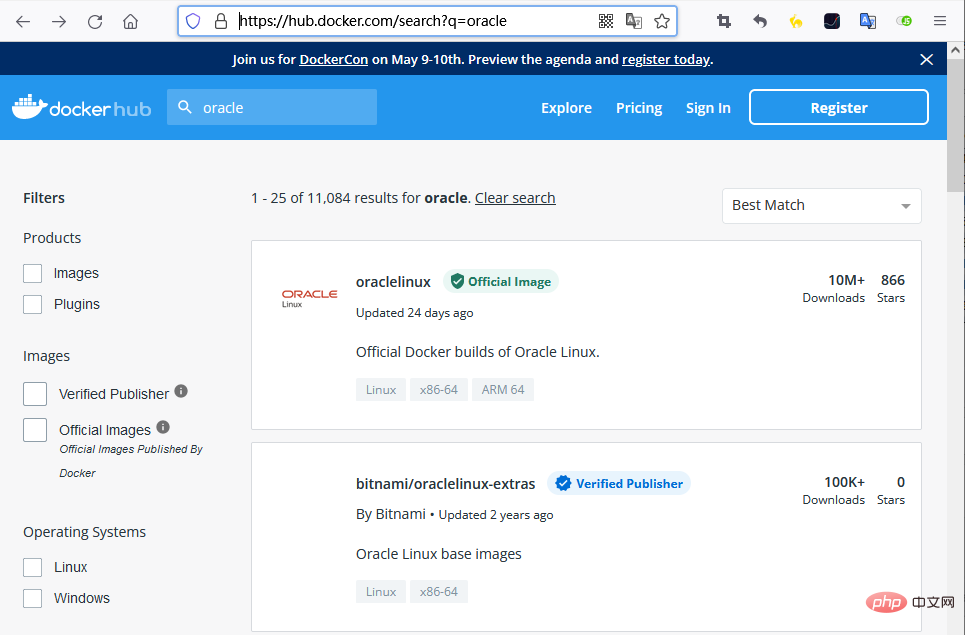
Note that if you use the docker pull oraclelinux command here, you cannot pull the image because it does not have latest tag. Therefore, you can only manually specify its version number
For example docker pull oraclelinux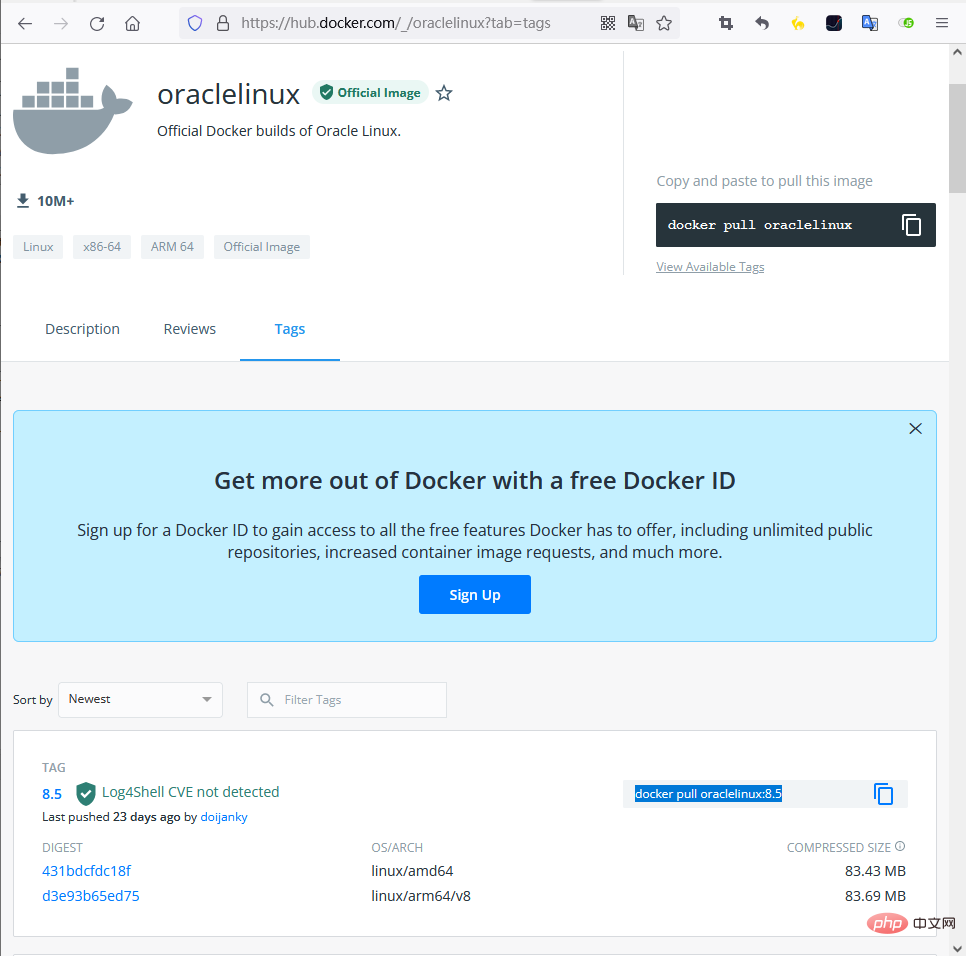
Using the official image download speed is very slow, therefore, we can use the Ali image docker pull registry.cn-hangzhou.aliyuncs.com/helowin/oracle_11g
can be found on dockerHub (the second one), you can refer to this configuration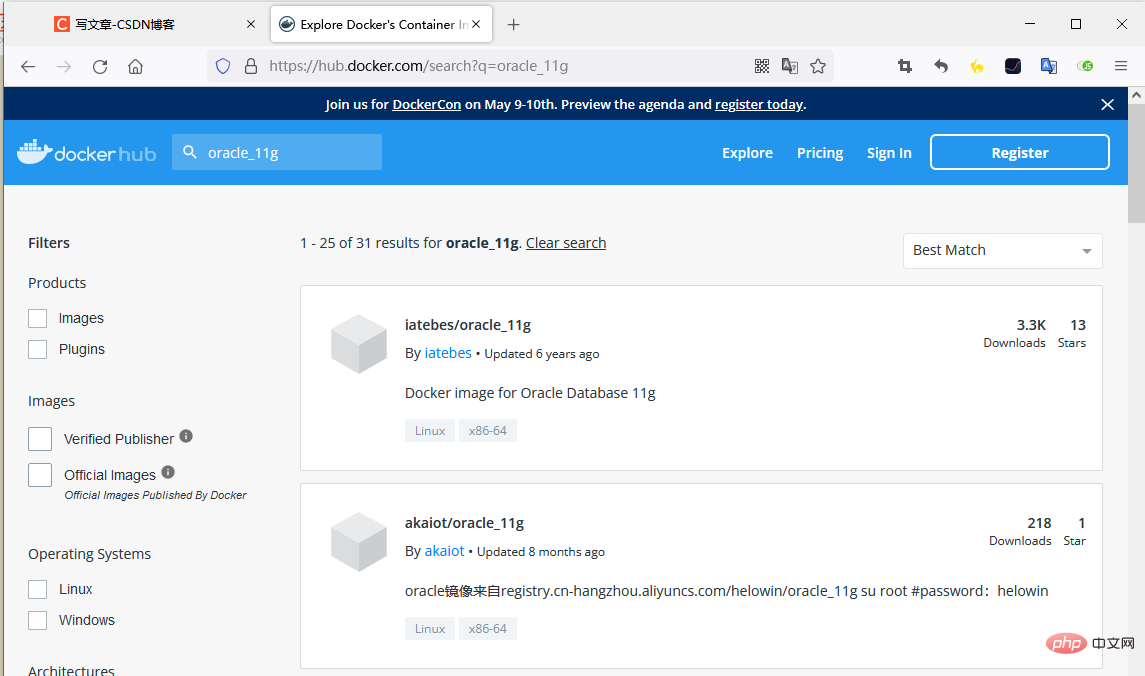
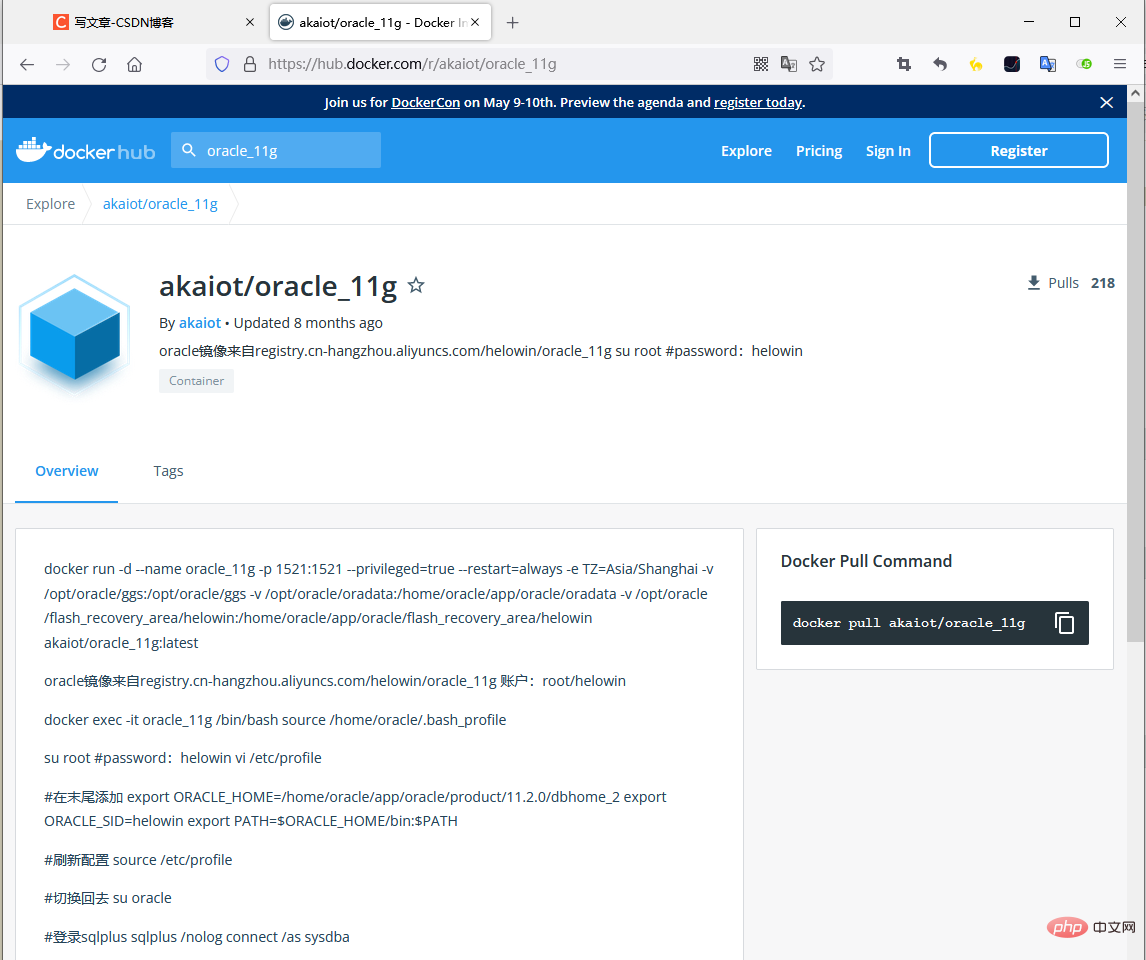 to use
to use docker images Check the image and confirm that it has been downloaded
docker run -d -it -p 1521:1521 --name oracle11g --restart=always registry.cn-hangzhou.aliyuncs.com/helowin/oracle_11g
docker run -d -it -p 1521:1521 --name oracle --restart=always --mount source=oracle_vol,target=/home/oracle/app/oracle/oradata registry.cn-hangzhou.aliyuncs.com /helowin/oracle_11g
View started threadsnetstat -tulnp
View running statusdocker ps -a 
Enter the containerdocker exec -it oracle11g bash
Switch to the root usersu root, password The environment variables configured for the helowin
docker container are not in /etc/profile, and this file will not be used when the container is started.
You can set the environment variable configuration in the /home/oracle/.bashrc file, which can omit the creation of soft connections ln -s $ORACLE_HOME/bin/sqlplus /usr/ bin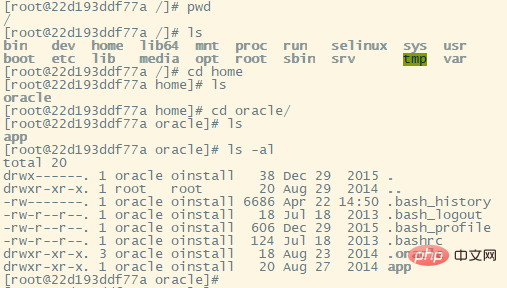
Edit environment variablesvi /home/oracle/.bashrc, add the following command at the end of the file
export ORACLE_HOME=/home/oracle/app/oracle/product/11.2.0/dbhome_2 export ORACLE_SID=helowin export PATH=$ORACLE_HOME/bin:$PATH
wq Save and exit. Then use source /home/oracle/.bashrc to refresh the environment variables and make them effective
Use sqlplus /nolog Enter the oracle command line 
Use the "operating system authentication" method to log in to oracle conn / as sysdba
If you directly use the default root user to log in, a login failure will be reported . The su - oracle command must be used here to switch the current user to oracle, and then execute the login command 
ORA-12514, TNS:listener does not currently know of service requested in connect descriptor
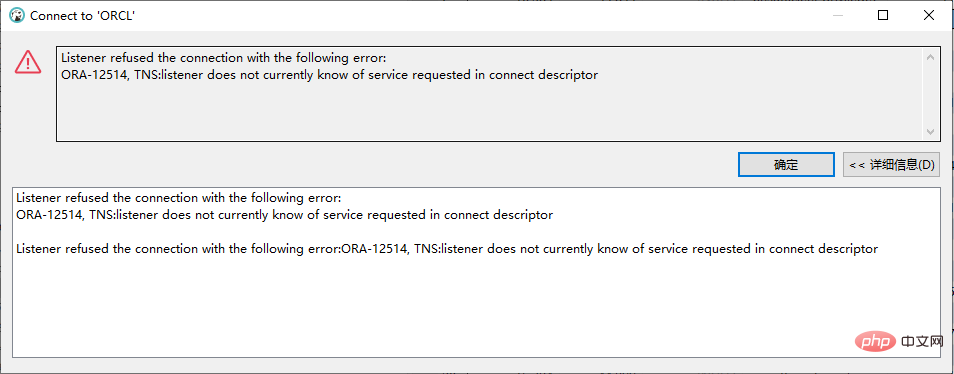 This error is due to the wrong database name
This error is due to the wrong database name
su - oracle sqlplus /nolog conn / as sysdba select instance_name from v$instance; show user;
Using the above command to find out, it is all available "database names" ” and “user name”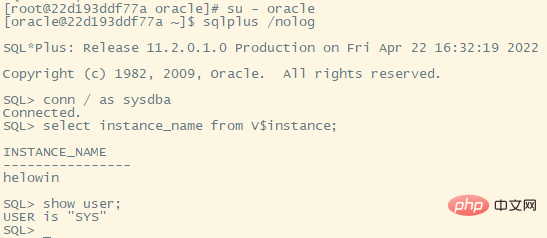
In this image of Ali, all passwords are unifiedhelowin
The system user has DBA authority, but No SYSDBA permissions. This account is usually used to manage the database.
The sys user is the account with the highest authority in the Oracle database. It has "SYSDBA" and "SYSOPER" permissions and is generally not allowed to log in from the outside.
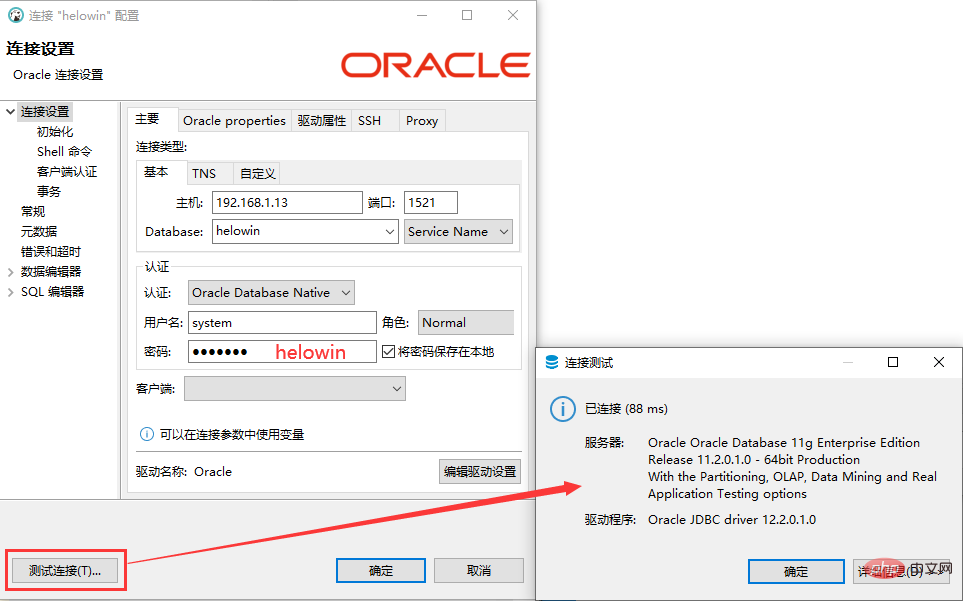
The firewall must allow port 1521 so that external database management tools can connect
# 打开防火墙 systemctl start firewalld # 查询端口状态 firewall-cmd --query-port=1521/tcp # 永久性开放端口 firewall-cmd --permanent --zone=public --add-port=1521/tcp # 重启防火墙 firewall-cmd --reload firewall-cmd --query-port=1521/tcp

Recommended study: "docker video tutorial"
The above is the detailed content of Can docker install oracle?. For more information, please follow other related articles on the PHP Chinese website!
 The difference between k8s and docker
The difference between k8s and docker
 What are the methods for docker to enter the container?
What are the methods for docker to enter the container?
 What should I do if the docker container cannot access the external network?
What should I do if the docker container cannot access the external network?
 What is the use of docker image?
What is the use of docker image?
 GameProtectNet solution
GameProtectNet solution
 How to increase fans of Douyin quickly and effectively
How to increase fans of Douyin quickly and effectively
 linear-gradient property
linear-gradient property
 C language variable naming
C language variable naming